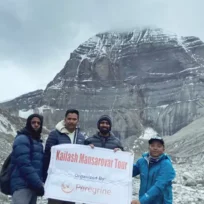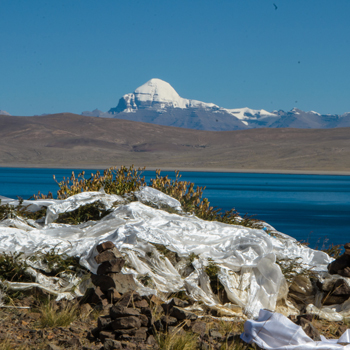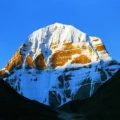High in the Himalayan mountains of Tibet, a sacred cave beckons pilgrims and spiritual seekers from across the globe. Milarepa Cave, a site of profound significance in Tibetan Buddhism, is not merely a geological wonder but a living testament to the power of meditation and devotion and the enduring legacy of Jetsun Milarepa, an 11th-century yogi and poet who spent transformative years in solitary practice within its walls.
Unearthing the Past: The Cave’s Legacy
Milarepa Cave graces Tibet’s rugged yet stunning landscapes, a region renowned for its deep spiritual heritage and breathtaking natural beauty. The cave’s importance is inseparable from a revered figure in Tibetan Buddhism, whose extraordinary tour from hardship to enlightenment inspires all who venture here.
Milarepa: The Poet-Yogi of Tibet
This revered figure’s legacy transcends his spiritual accomplishments. People celebrate him as a poet whose verses, many born within the cave, illuminate profound insights into Buddhist philosophy and practice. His songs, woven with symbolism and wisdom, resonate across time, offering solace, guidance, and a path to inner peace to people from all walks of life.
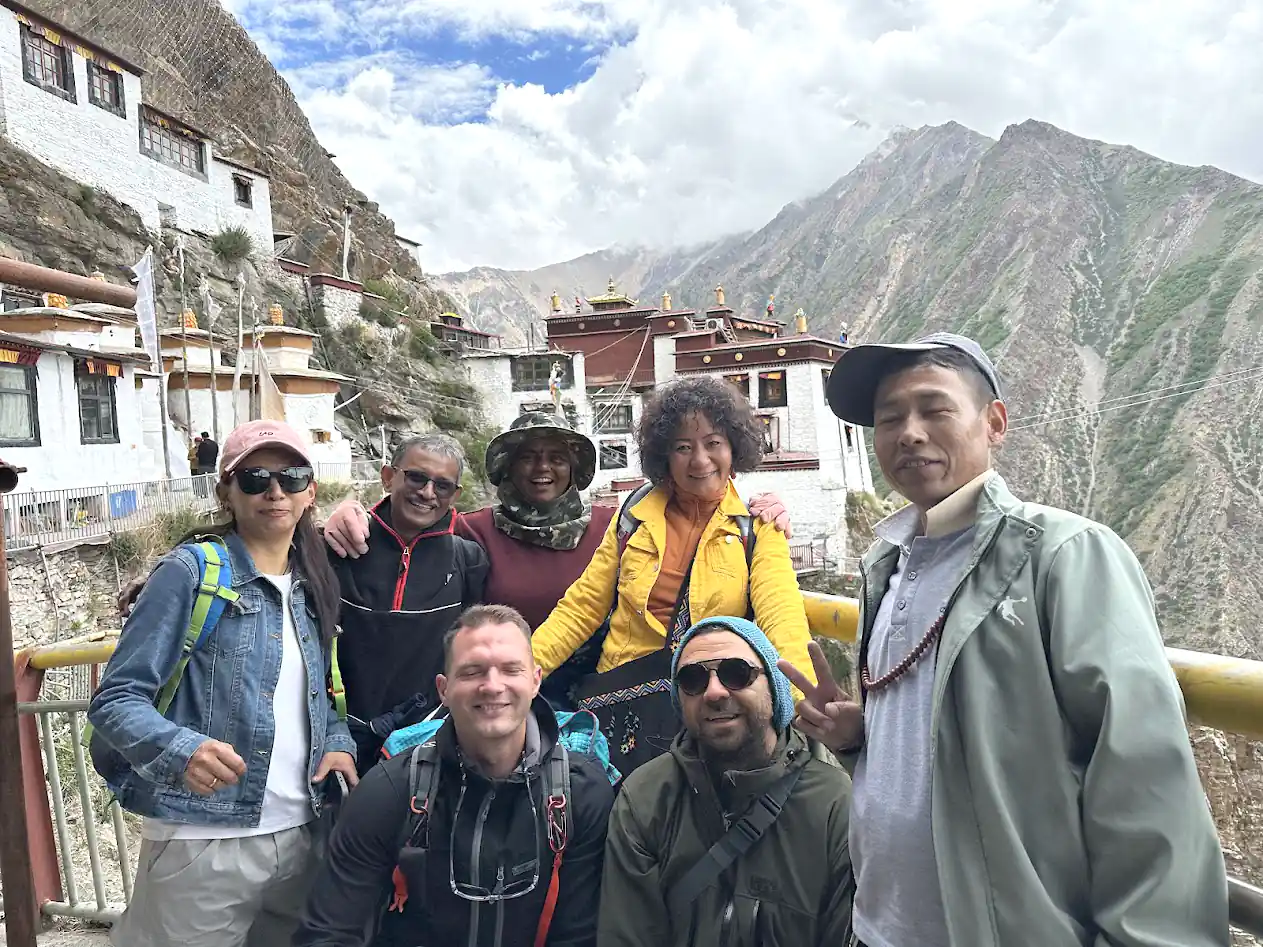
The Miraculous Life of Jetsun Milarepa: A Luminary of Tibetan Buddhism
The life story of Jetsun Milarepa, a central figure in Tibetan Buddhism, is a compelling tale of transformation and spiritual triumph. Born in the 11th century, Milarepa faced immense tragedy and hardship in his early years, leading him down a path of vengeance and dark magic. Yet, a profound realization of the destructive nature of his actions ignited a thirst for redemption and spiritual guidance. He sought out the revered Buddhist master Marpa Lotsawa, beginning a tour that would change the course of his life and leave an enduring mark on Tibetan Buddhism.
- From Darkness to Light: Marpa Lotsawa’s mentorship guided Milarepa through intense training, where he faced immense challenges that tested his determination and pushed him to his limits. His unwavering determination and unwavering faith propelled him to extraordinary spiritual heights.
- Yogic Mastery and Legendary Feats: Milarepa mastered various yogic practices, including tummo (inner heat), which allowed him to withstand extreme cold and survive minimal sustenance. Accounts of his ability to levitate, fly through the air, and perform other miraculous feats have become legendary, cementing his reputation as a great yogi and spiritual leader.
- Founder of the Kagyu School: Milarepa’s most enduring contribution to Tibetan Buddhism was the founding of the Kagyu School, one of the four leading schools of Tibetan Buddhism. The Kagyu lineage emphasizes the importance of meditation and direct experience of the mind as a path to enlightenment. His teachings, often expressed through his poignant songs and poems, inspire and guide countless spiritual seekers today. A visit to Milarepa Cave, a central site in his spiritual tour, offers a unique opportunity to connect with the life and teachings of this remarkable figure.
Milarepa Cave: A Sacred Sanctuary and Pilgrimage Destination
- Milarepa’s Spiritual Haven: Nestled in the rugged terrain of Tibet, this Cave served as a pivotal setting for Milarepa’s spiritual tour. It was within these secluded walls that he spent years in solitary meditation, confronting his inner demons and ultimately achieving enlightenment. Visitors believe the cave’s energy still resonates with the power of Milarepa’s practice, making it a potent site for spiritual seekers on a Milarepa Cave pilgrimage.
- A Place of Pilgrimage and Devotion: Over the centuries, it has evolved into a revered pilgrimage destination for followers of Tibetan Buddhism. It symbolizes the potential for transformation and the power of unwavering devotion. Pilgrims often visit to meditate, chant prayers, and leave offerings, seeking blessings and inspiration from the spirit of Milarepa.
- A Guided Journey: Many pilgrims visit the cave with a knowledgeable Namkading Cave guide. These guides offer valuable insights into the cave’s history, significance, and spiritual practices, enriching the pilgrimage experience for visitors and providing a deeper understanding of Milarepa Tibetan Buddhism.
Geographical and Spiritual Oasis in the Himalayas
Tucked away in the rugged beauty of the Tibetan Himalayas, Milarepa Cave captivates visitors with its unique blend of natural wonder and spiritual significance. The cave’s geographical features and surrounding landscape create an awe-inspiring backdrop for individuals seeking to connect with the legacy of Jetsun Milarepa and Tibetan Buddhism.
The Cave Itself: A Natural Marvel
The cave is a modest yet captivating space within the rocky cliffs. A narrow opening, often adorned with colorful prayer flags that dance in the wind, marks its entrance. Inside, the cave expands into a dimly lit chamber, its rough, uneven floor and walls etched with the marks of time. A sense of stillness and tranquility permeates the space, a testament to the countless hours of meditation practiced here over the centuries. Natural light filters through crevices in the rock, casting an ethereal glow upon the interior.
The Enchanting Himalayan Surroundings
Milarepa Cave’s location enhances its spiritual allure. Situated in a remote valley encircled by towering peaks and lush meadows, the cave offers breathtaking panoramic views of the Himalayan landscape. Crisp, clean air carries the scent of wild herbs and the sound of rushing streams. The surrounding terrain showcases nature’s raw power and beauty, providing a fitting setting for spiritual contemplation and connection.
Accessibility for Pilgrims and Tourists
Reaching Milarepa Cave requires effort, but many consider the tour a pilgrimage. Travelers access the cave via a combination of road travel and hiking. Typically, they arrive at the nearest town and arrange transportation to the trailhead. The hike to the cave is moderately challenging, but the stunning scenery and the spiritual significance of the destination make it a rewarding experience.

The Spiritual Heart of Milarepa Cave: A Pilgrimage Destination Steeped in Legend
In the Tibetan Himalayas, Milarepa Cave stands not just as a geological formation but as a powerful symbol of spiritual transformation and the enduring strength of Tibetan Buddhism. The cave’s connection to Jetsun Milarepa, a revered yogi and poet, draws countless pilgrims seeking to connect with his teachings and feel the transformative energy of the place.
A Beacon for the Faithful
For centuries, followers of Tibetan Buddhism have sought out Milarepa Cave as a place of pilgrimage. The cave’s spiritual significance arises from its link to Milarepa, who spent years in solitary retreat there, meditating and ultimately achieving enlightenment. Pilgrims worldwide visit this sacred site, seeking blessings, inspiration, and a deeper connection with their spiritual practice. Many believe the cave’s energy still vibrates with the power of Milarepa’s devotion, making it a potent location for meditation and contemplation.
Legends and Lore of Milarepa Cave
Numerous stories and legends surround Milarepa’s time in the cave, enhancing its mystical aura. One tale recounts how a diet of nettles turned Milarepa’s skin green. Another tells of how he cleverly outwitted demons who attempted to disrupt his practice. These stories shared across generations, reveal Milarepa’s incredible trip and the trials he conquered to achieve enlightenment.
One particularly well-known legend tells of Milarepa’s encounter with a hunter. The hunter, initially intending to kill Milarepa, was so moved by the yogi’s compassion and wisdom that he abandoned his violent ways and became a disciple. This story illustrates the transformative power of Milarepa’s presence and the profound impact of his teachings on those he encountered.
Experiencing the Spiritual Significance of Milarepa Cave
- Meditation and Prayer: Many pilgrims spend quiet meditation inside the cave, connecting with the site’s energy and seeking inner peace. Chanting prayers and mantras is another common practice, enhancing the spiritual atmosphere within the cave.
- Offerings and Rituals: Pilgrims show respect and gratitude by leaving offerings of butter lamps, incense, and other symbolic items. Some may also participate in specific rituals or practices with local expert guides.
- Connecting with Nature: The cave’s natural surroundings offer a peaceful setting for contemplation and reflection. Pilgrims often explore the surrounding area, appreciating the landscape’s beauty and the environment’s serenity.
Planning Your Visit: A Practical Guide for Travelers
Are you ready to experience the spiritual allure of the revered Milarepa Cave? This guide equips you with essential information to plan your visit to this Tibetan Buddhist sanctuary.
How to Reach Milarepa Cave
Nearest Towns: Nyalam, the closest central town, sits approximately 11 kilometers away and is a convenient base for arranging transportation and gathering supplies.
Getting There
- Road Travel: Most travelers reach Nyalam by road, either through organized tours or by hiring private vehicles. The Friendship Highway, connecting Lhasa with Kathmandu, conveniently passes near Nyalam.
- Hiking: From Nyalam, the tour to the cave continues on foot. The hike takes approximately 2-3 hours and winds through scenic mountain trails. Enrich your experience by engaging a local guide or porter for assistance and valuable cultural insights.
Best Times to Visit
The best time to visit depends on your personal preferences:
- Weather: For pleasant weather, consider visiting during spring (April-May) or autumn (September-October). During these seasons, you’ll find comfortable temperatures and clear skies, ideal for hiking and exploring the beautiful surrounding area.
- Local Festivals: To experience the region’s vibrant culture and spiritual traditions, make your visit coincide with a major festival like Saga Dawa or the Tibetan New Year.
- Crowds: For a more tranquil and solitary experience, avoid peak tourist season (July-August). Spring and autumn offer a calmer atmosphere for those seeking peaceful reflection.
Additional Tips for Your Visit
- Altitude Acclimatization: Take the necessary precautions for the high altitude of the Tibetan plateau. Allow yourself time to acclimatize gradually and stay hydrated throughout your travels.
- Respectful Conduct: As a sacred site for Tibetan Buddhists, dress modestly, maintain a quiet and respectful demeanor, and refrain from any actions disrupting the peaceful atmosphere.
- Permits: Research and obtain any necessary permits for travel in Tibet before your trip.
What to Expect During a Visit
When you enter Milarepa Cave, you step into a simple yet profoundly moving space. Here’s what awaits you within this sacred sanctuary:
- Meditation Chamber: Discover the central area where Milarepa devoted countless hours to deep contemplation. Visitors often sit here for meditation, seeking to connect with the cave’s serene energy and perhaps even experiencing a deeper connection with themselves.
- Soot Marks: The walls bear the black marks of soot from butter lamps lit by Milarepa and countless pilgrims over the centuries. These marks connect to the devotion and spiritual practice that have filled the cave throughout the ages.
- Stalactites and Stalagmites: Marvel at the natural rock formations, often adorned with colorful prayer flags and khatas (ceremonial scarves), creating a mystical atmosphere that transports you back in time.
- Personal Artifacts: You might even discover small stones or other objects believed to have been used by Milarepa, offering a tangible connection to the past and the life of this revered figure.
Beyond the Cave: A Spiritual Landscape Beckons
The area surrounding Namkading Cave is as enchanting as the cave itself. Here’s what awaits your exploration:
- Prayer Flags: Colorful prayer flags dance in the wind, adorning the landscape and creating a vibrant and sacred atmosphere that fills you with peace and tranquility.
- Pelgye Ling Monastery: A small monastery built around the cave houses a statue of Padmasambhava, another revered figure in Tibetan Buddhism. Pilgrims often visit the monastery to offer prayers and receive blessings, adding another layer of spirituality to their experience.
- Breathtaking Scenery: The cave’s location in a remote valley offers stunning panoramic views of the Himalayan mountains. Take a moment to absorb the natural beauty and serenity of the surroundings.
Guided Tours and Local Guides: Unlocking Deeper Understanding
Guided Tours: Organized tours led by knowledgeable guides offer a deeper understanding of the cave’s history and significance for those seeking a richer experience. These tours often include visits to other spiritual sites in Tibet, providing a broader context for your pilgrimage.
Local Guides: Alternatively, you can hire local guides independently. They offer personalized tours and share their intimate knowledge of the area’s culture, traditions, and fascinating stories of Milarepa. Engaging a local guide enriches your experience and supports the local community.
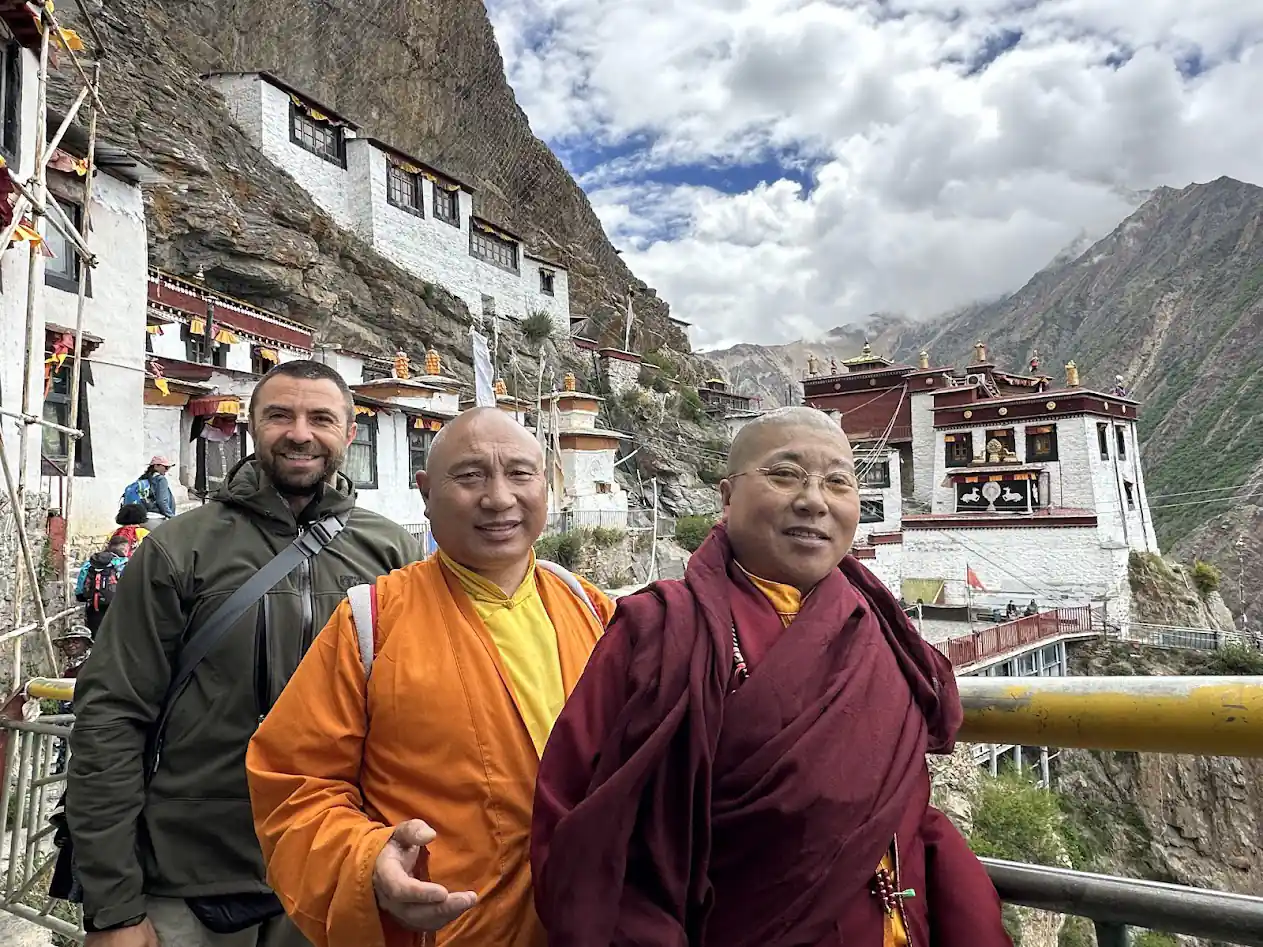
Tips for a Respectful and Rewarding Visit
Are you planning a pilgrimage to Milarepa Cave? This unique experience blends spiritual exploration with the challenges of high-altitude travel in a culturally rich region. Careful preparation and understanding of Tibetan etiquette ensure a fulfilling and respectful visit.
Pack Smart for Your Milarepa Cave Adventure
- Clothing: Pack clothing in layers that you can easily add or remove to prepare for the dramatic temperature fluctuations in the mountains. Include warm clothes for cooler mornings and evenings, plus moisture-wicking options for hikes. Remember sturdy hiking boots, a hat, sunglasses, and sunscreen.
- Travel Documents: Before your trip, ensure you have a valid passport, China Group Visa, and Tibet Travel Permit. Make copies and store them separately for safety.
- Physical Preparation: The high altitude of the Tibetan plateau demands respect. Prioritize regular exercise to boost your fitness level, and consult your doctor about any altitude-related health concerns.
Embrace Cultural Sensitivity
- Dress Respectfully: When visiting Milarepa Cave and other sacred Tibetan sites, choose modest attire. Avoid revealing clothing or anything considered disrespectful in the local culture.
- Photography: Be aware of photography restrictions. Some sacred sites may prohibit photography entirely, while others may have specific guidelines. Always ask permission before taking pictures.
- Offerings: A small donation or gift at Tibetan Buddhist sites is customary. Consider money, incense, or butter lamps.
- Respect Prayer Flags: Do not touch or disturb them; they are sacred objects.
- Mindful Behavior: Maintain a quiet and respectful demeanor while visiting. Avoid loud conversations or disruptive behavior.
- Engage with Your Guide: Ask your Milarepa Cave guide questions about Tibetan culture, history, and spiritual practices. They offer valuable insights for understanding this sacred site.
Shared Responsibility for Future Generations
Milarepa Cave is a revered Tibetan Buddhist sanctuary with immense spiritual and historical significance. Preserving this cultural treasure demands a collaborative effort from local communities, government bodies, and visitors alike.
Current Conservation Initiatives
Various organizations and stakeholders actively work to safeguard Milarepa Cave. Here are some key conservation measures currently in place:
- Restricted Access: Authorities limit access to the cave to specific times and group sizes to minimize wear and tear. This measure prevents overcrowding and protects the delicate interior.
- Designated Trails: Marked trails guide visitors, minimizing damage to the surrounding vegetation and fragile ecosystems.
- Educational Initiatives: Local guides and monasteries educate visitors about the cave’s significance and the importance of responsible tourism. They emphasize respectful behavior and promote practices that leave minimal impact.
- Maintenance and Repairs: Teams conduct regular maintenance and repairs, addressing structural issues arising from natural wear and tear or environmental factors. It ensures the cave’s integrity for future generations.
How Visitors Can Contribute to Preservation Efforts
Visitors to Milarepa Cave can play an active role in preserving this historic and spiritual site:
- Follow the guidelines: Adhere to all rules and regulations set forth by local authorities and follow your Milarepa Cave guide. It includes staying on designated trails, respecting restricted areas, and following photography guidelines.
- Leave No Trace: Pack out all trash and avoid disturbing the natural environment. Milarepa Cave’s beauty lies in its pristine surroundings.
- Support Local Initiatives: Consider contributing to local organizations that preserve Tibetan cultural heritage and spiritual sites.
- Spread Awareness: Engage others in conversations about your Namkading Cave experience and share your knowledge. Advocate for responsible tourism practices and emphasize the importance of protecting this sacred site for future generations.
Voices from Milarepa Cave: Pilgrims’ Reflections and Transformations
Countless spiritual seekers have found solace and inspiration within the hallowed walls of Milarepa Cave. Their accounts offer a glimpse into this sacred site’s transformative power.
Personal Insights: Voices from the Cave
- A Deepening of Practice: Tenzin, a Tibetan Buddhist monk, shared, ” Visit Milarepa Cave felt like a homecoming. Meditating in the same space where Milarepa achieved enlightenment deepened my practice and rekindled my devotion to the Dharma.”
- An Oasis of Tranquility: Sarah, an American traveler, described her experience as “life-changing.” She felt a profound sense of peace and tranquility within the cave’s walls, as if “the very stones whispered ancient wisdom.”
- A Renewed Sense of Purpose: David, a European spiritual seeker, was deeply moved by his visit. He said, “The experience at Namkading Cave left me with a renewed sense of purpose and a deeper understanding of the interconnectedness of all beings. It strengthened my commitment to my spiritual path.”
Milarepa Cave Pilgrimage: A Catalyst for Personal Growth
The impact of visiting Milarepa Cave transcends the physical experience for many. Many pilgrims report significant shifts in their spiritual and personal lives:
- Cultivating Inner Peace: The cave’s serene atmosphere and the energy of Milarepa’s practice help visitors develop a sense of calm and inner peace, even amidst life’s challenges.
- Strengthening Spiritual Connection: The cave is a potent catalyst for spiritual growth and transformation. It often inspires individuals to deepen their practice and explore new paths.
- Finding Inspiration and Motivation: Milarepa’s life story and teachings inspire visitors to overcome obstacles and pursue their spiritual aspirations with renewed vigor.
- Appreciating Tibetan Buddhist Culture: A visit to Milarepa Cave immerses visitors in the rich cultural heritage of Tibetan Buddhism, fostering a deeper understanding and respect for this ancient tradition.

